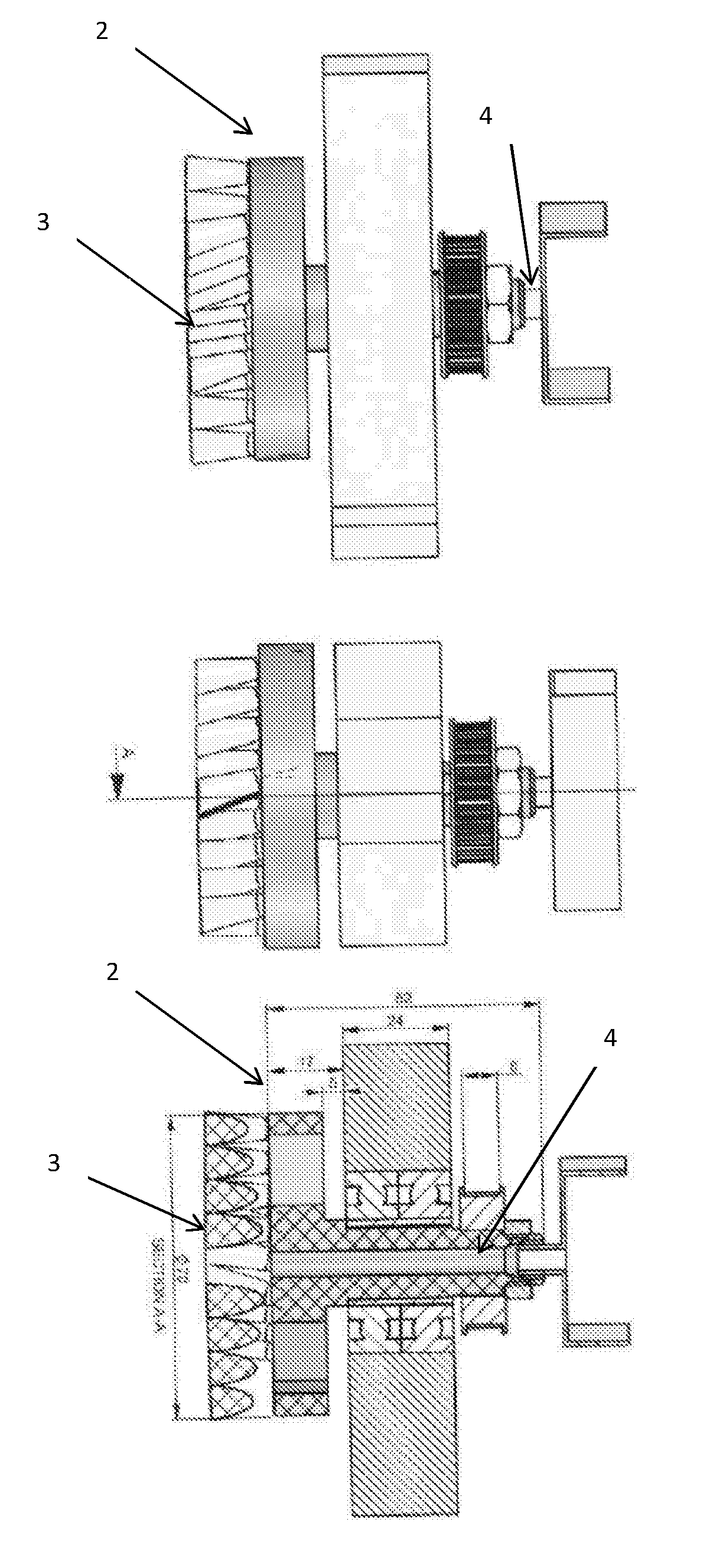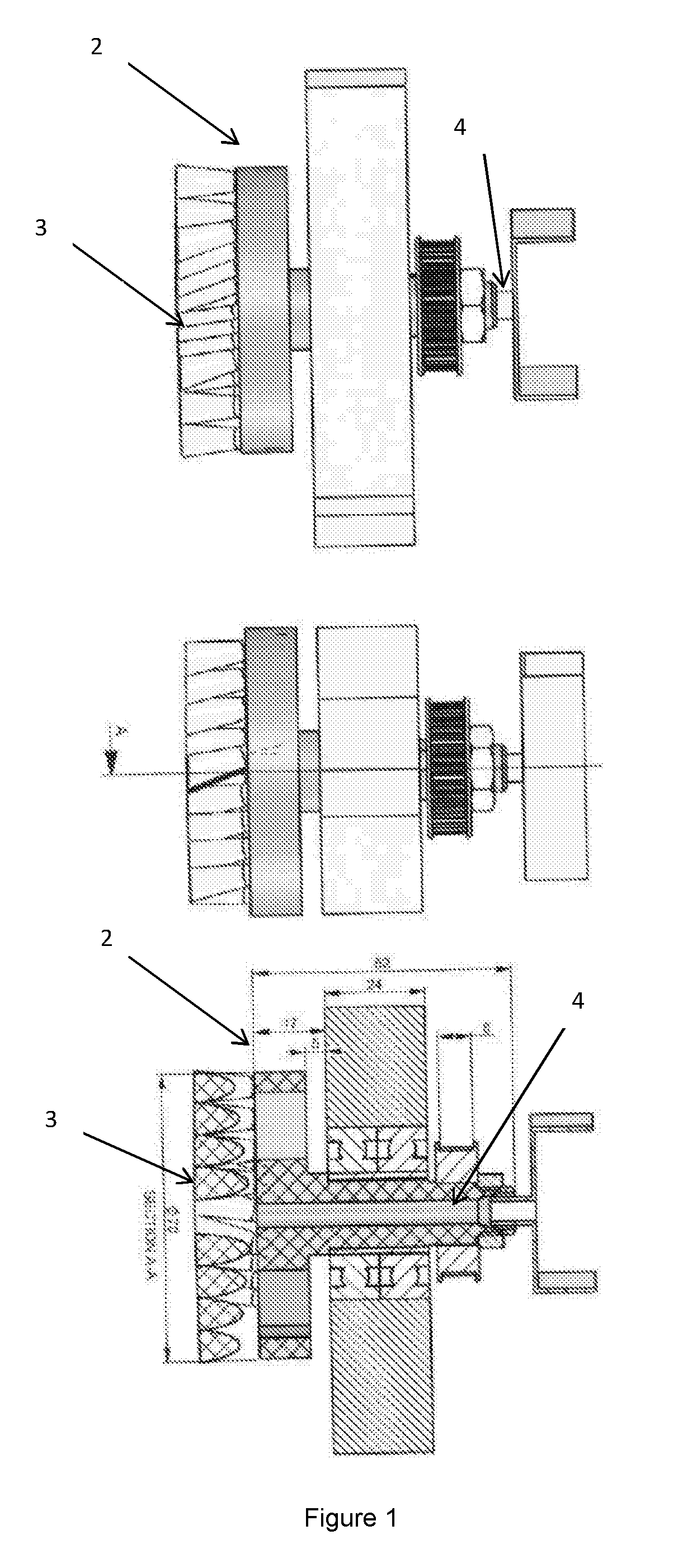System for cleaning flexographic printing plates
a technology for washing out and printing plates, applied in printing, optics, instruments, etc., can solve the problems of reducing the accuracy of printing plate mounting on the printing cylinder, affecting the quality of printed images, and certain fouling of printing plates, etc., to achieve the effect of not affecting the risk of obtaining plate areas brushed differently from other areas
- Summary
- Abstract
- Description
- Claims
- Application Information
AI Technical Summary
Benefits of technology
Problems solved by technology
Method used
Image
Examples
Embodiment Construction
[0030]Referring to FIGS. 1 and 2 there is shown a system for treating printing plates according to the first aspect of the present invention. There is shown the structure (1) rotatably supporting a plurality of brushes (2) of substantially cylindrical shape and provided with sets of bristles (3) attached to a substantially flat support of each brush, said brushes having their shafts (4) orthogonal to the printing plates to be treated. As can be seen from FIG. 2 the bristles (3) are angled about 75 degrees relative to said flat support.
[0031]Referring to FIGS. 3 and 4 there is shown a system for treating printing plates according to the second aspect of the present invention. Specifically there is shown a support structure (10) supporting a plurality of sets of bristles (30) attached to the support structure (10). The sets of bristles are angled about 75 degrees relative to support structure (10), which is eccentrically pivoted onto a support frame (20) so that it can be moved by a m...
PUM
 Login to View More
Login to View More Abstract
Description
Claims
Application Information
 Login to View More
Login to View More - R&D
- Intellectual Property
- Life Sciences
- Materials
- Tech Scout
- Unparalleled Data Quality
- Higher Quality Content
- 60% Fewer Hallucinations
Browse by: Latest US Patents, China's latest patents, Technical Efficacy Thesaurus, Application Domain, Technology Topic, Popular Technical Reports.
© 2025 PatSnap. All rights reserved.Legal|Privacy policy|Modern Slavery Act Transparency Statement|Sitemap|About US| Contact US: help@patsnap.com



